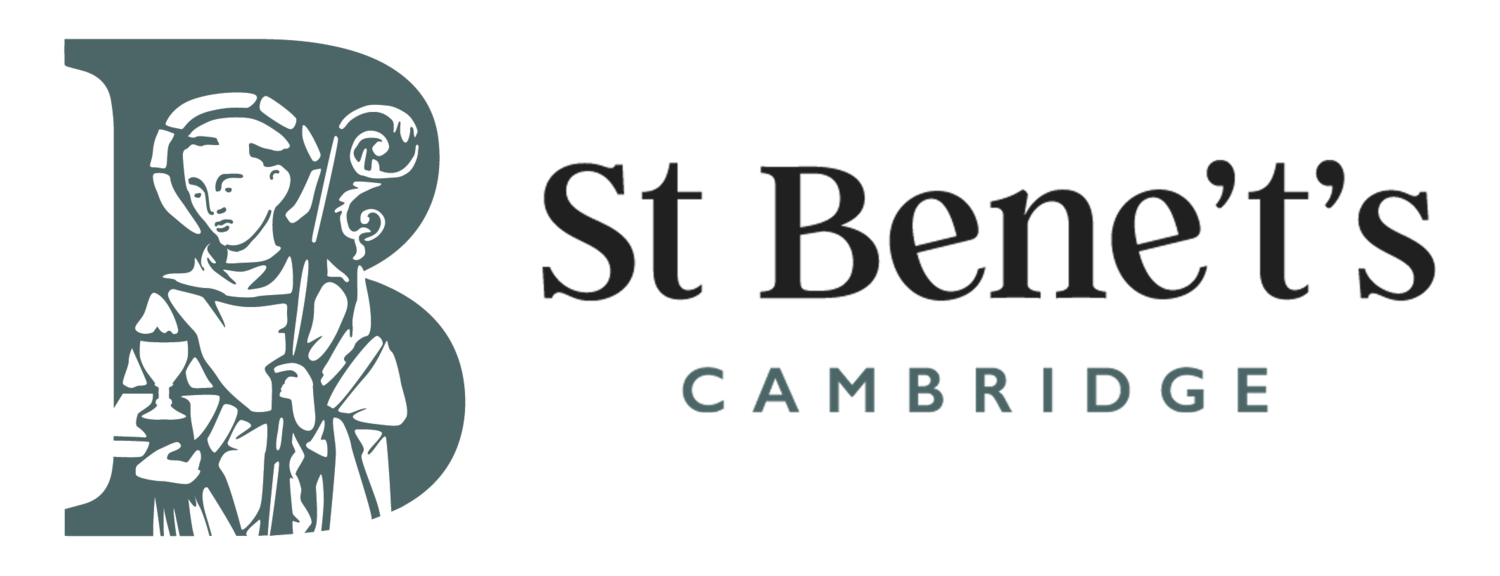
The Anglo-Saxon Foundations of the Church
In 1020, Cambridge was a market town of increasing importance in the East of England. Christianity had come to the British Isles over 800 years before, but only spread widely among Anglo-Saxons after the mission of Augustine of Canterbury, sent in 597 by Pope Gregory the Great. The patron saint of this parish, Benedict of Nursia, came to prominence in England in the wake of monastic and religious reforms of the tenth century.

St Bene’t’s and Corpus Christi College
Like many churches in Cambridge, the history of St Bene’t’s is tied to the life of the University, founded in 1209. The bells of St Bene’t’s rang out notice of University ‘acts, clearums, congregations, lectures, disses and such like’ from at least 1273, and in the same century, the church was expanded to accommodate a larger congregation. But a new chapter opened after the Black Death reshaped Cambridge life around 1348.

The Reformation
In the sixteenth century, the Protestant Reformation shook Europe and its churches to their core. Cambridge proved a volatile place, as successive monarchs and their advisors drove reform in the Church of England: from King Henry VIII, Thomas Cromwell, and Archbishop Thomas Cranmer to Edward VI and Edward Seymour to Queen Elizabeth and Bishop John Jewel.

Devastation & Change in the 17th Century
Few realise that St Bene’t’s was nearly closed in the seventeenth century, a victim of broader changes sweeping the nation after the English Civil War. In 1649, the Church of England was disestablished, and in 1650, the town commissioners suggested closing the parish church, since its minister was supported by the funds of parishioners, without a vicarage or other property to support him.

Famous 17th & 18th Century Parishioners
Thomas Hobson (c. 1544-1631), Thomas Russell (1587-1673), Thomas Mace (1612/13–c. 1706), and Richard Dunthorne (1711–1775).

Restoration & Furnishing in the 19th Century
The nineteenth century saw the birth of the Catholic revival in the Church of England, as well as a renewal of interest in Gothic Architecture. The Cambridge Camden Society, active from 1839, proved influential, believing that the promotion of ‘Catholic architecture’ might shape a more ‘Catholic ethics’. Churches throughout England were refashioned, and St Bene’t’s was no exception. Much of what you see in the church today is Victorian.

Vicars of the Twentieth Century
Francis Noel Davey (1904-1973), Michael Ramsey (1904-1988), and The Society of St Francis

The Parish Today
People come to St Bene’t’s from a range of backgrounds, with different gifts and experiences, and we hope to welcome all, rejoicing in the diversity of people God calls to follow him. We seek to be an inclusive community, and to put into practice St Benedict’s teaching in his Rule: ‘All guests who present themselves are to be welcomed as Christ, for he himself will say: “I was a stranger and you welcomed me”’ (Matthew 25:35).

The building of the north aisle and its furnishings

Society of St Francis & St Bene’t’s Church 1946–2005

Thomas Hobson (1544 -1631) and St Bene’t’s
Cambridge c. 1020: The Setting of St Bene’t’s

